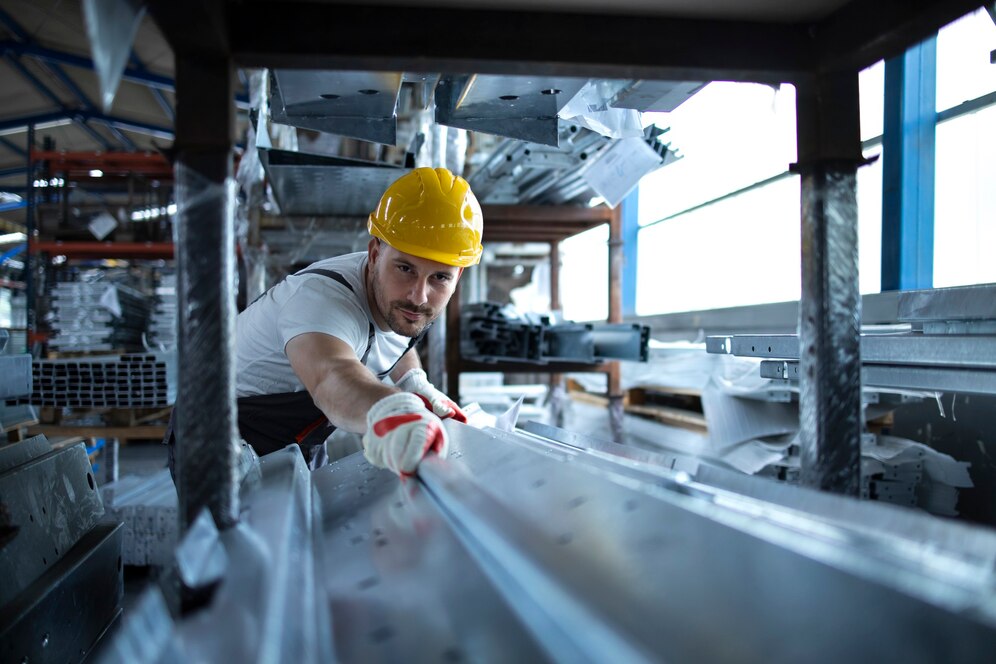The process of bending metal and metal pipes plays an important role in various sectors, including construction, the automotive industry, and more. Regardless of the purpose for which the metal is used, including various designs and pipe production, the quality of the final result depends on specialized metal processing, including metal bending. Below, we will examine different pipe bending techniques, from traditional methods to innovative solutions.
Why Correct Metal Bending is Important
When bending metal pipes, precision and quality play a crucial role in ensuring the overall strength, durability, and efficiency of the system. Poorly or incorrectly bent pipes can lead to structural weaknesses, increasing the risks of malfunction, premature material wear, and inefficiency in system performance.
Deformations, cracks, or imbalances caused during the bending process can not only shorten the lifespan of the pipes but also create serious safety concerns, especially in industries like those mentioned above. Furthermore, low-quality pipe bending methods can result in higher costs, delays in production deadlines, and unnecessary material waste.
Choosing the right technique for bending pipe ensures a high-quality result, improves system reliability, reduces unnecessary expenses, and meets strict safety and performance standards.
Traditional Pipe Bending: Manual Bending
Manual bending is one of the oldest methods of pipe bending, relying on human strength and basic tools such as bending devices and levers. This method is still used for small-scale projects where automation is not necessary. However, it has limitations in terms of precision and repeatability.
Rotary Bending
In rotary bending, the pipe is secured onto a rotating die, which stretches the material to a pre-defined radius. This method ensures high precision and repeatability, making it ideal for applications that require neat and uniform bends, such as the production of handrails and automotive frames.
Compression Bending
In compression, modern pipe bending is when it’s compressed onto a stationary die, while a movable compression arm shapes the bend. This method is simple and cost-effective, but it can lead to pipe deformation or flattening of the cross-section.
Modern Metal Bending Methods
Today, metal bending is carried out in a variety of ways, but one of the most well-known and widely used methods is bending with compression force. As we discussed earlier, this metal bending technique has been known since ancient times, but today it has evolved into a more advanced process. While in the past, the metal was simply placed onto a rotating die for compression, now it is processed using exclusively modern metalworking equipment.
Modern compression bending machines are equipped with automated control systems and digital interfaces, allowing technicians to set precise angles and monitor the process in real time. As a result, human errors are minimized, improving production efficiency—especially in mass production.
Metal Bending at All Metal Constructions
Metal bending (or flexing) is a manufacturing process in which prepared metal materials are shaped into the required form without the need for welding or additional reinforcements.
Flat Metal Sheet Bending
The result of flat metal sheet bending is the transformation of flat plates into volumetric parts, which are widely used for both functional and decorative purposes.
All Metal Constructions uses high-quality machinery for sheet bending, capable of providing up to 160 tons of pressure force.
- Maximum bending length: up to 3.2 meters
- Maximum bending thickness: up to 8 mm
It is possible to bend both ferrous metal sheets and stainless steel or aluminum.
Pipe Bending
All Metal Constructions performs pipe bending using high-quality Italian machinery, ensuring superior quality and precision.
- Maximum bending length: unlimited
- Minimum radius: 500 mm
Both rectangular and round cross-section metal pipes can be bent.
Z and C Profile Bending
In addition to the services mentioned above, All Metal Constructions also offers Z and C-profile bending services.
These are metal profiles widely used in the construction industry, particularly for reinforcing roof structures.
Summary
Metal and pipe-bending technologies are key components in the manufacturing, construction, and engineering sectors. Quality bending work enables the creation of durable, reliable, and precise metal elements that provide structural strength, functionality, and aesthetic excellence.
All Metal Constructions, using high-quality, modern machinery, guarantees top-notch bending services with precision and efficiency. Whether you need sheet metal bending, pipe bending, or the shaping of Z and C profiles, our experienced specialists ensure perfect results tailored to the technical requirements of each project.
By adhering to industrial standards and applying cutting-edge technologies, we deliver solutions that meet demanding engineering needs, reduce material waste, and uphold the highest quality standards. For reliable and quality metal processing, trust the expertise of All Metal Constructions.

